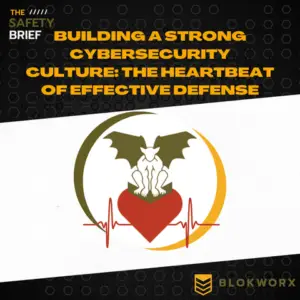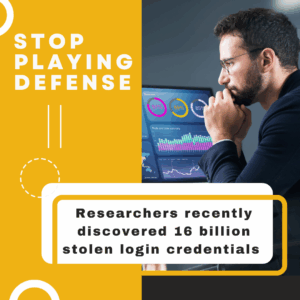In today’s rapidly changing cybersecurity landscape, technical defenses are only as effective as the culture that supports them. For organizations to stay secure, it’s crucial to cultivate a strong cybersecurity culture—one that extends beyond just policies and procedures. This culture needs to be embedded across all levels of the organization, turning security into a shared responsibility rather than the task of a select few.
Key Elements of a Strong Cybersecurity Culture
A robust cybersecurity culture is built on shared values, behaviors, and practices that prioritize security in every aspect of operations. It’s not just about having the right tools or technology in place; it’s about ensuring that every team member understands their role in safeguarding the organization’s assets. This culture should be reflected in decision-making processes, everyday actions, and even client interactions.
Leadership’s Role in Cultivating Security
Effective leadership is essential in fostering a security-first mindset within an organization. Leaders must not only advocate for security but also embody the practices and principles they wish to see in their teams. By leading by example, leaders can inspire their teams to embrace security as part of their daily routines. It’s about creating a culture where security is everyone’s job, from IT to HR.
Addressing Common Challenges
Building and maintaining a cybersecurity culture comes with its challenges. Resistance to change, a lack of awareness, and competing priorities can all impede progress. However, these challenges can be overcome with targeted training, clear communication, and consistent reinforcement. By addressing these obstacles head-on, organizations can create a culture that enhances their security posture.
The Importance of Employee Training and Awareness
One of the most effective ways to strengthen a cybersecurity culture is through regular employee training and awareness programs. Tailoring these programs to meet the needs of different teams ensures that every employee understands the specific threats they face and how to mitigate them. This approach not only boosts compliance but also empowers employees to actively contribute to the organization’s security.
The Power of Clear Communication
Sustaining a cybersecurity culture requires ongoing communication. Regular updates, clear messaging, and open channels for feedback keep everyone informed and engaged. Transparency is key—ensuring that the entire team is aware of emerging threats, new policies, and best practices helps maintain a unified approach to security.
Measuring and Improving Cybersecurity Culture
To ensure that a cybersecurity culture remains effective, it’s important to regularly assess its impact. Surveys, audits, and performance metrics can help identify areas for improvement and guide adjustments to strategies. Continuous evaluation helps organizations stay ahead of potential vulnerabilities and ensures that their culture aligns with their security goals.
Integrating Cybersecurity Culture into Hiring Practices
When it comes to hiring, it’s not just about finding candidates who understand the existing culture—it’s about bringing in people who are inspired to stay secure and help others do the same. In today’s rigorous cybersecurity field, it’s vital to hire individuals who are passionate about security and committed to maintaining it across the organization. This approach ensures that the culture of security is not only preserved but also strengthened with each new hire.
For partners looking to cultivate a similar culture of cybersecurity best practices, it’s essential to prioritize these elements. By embedding security into every level of your organization, you can create an environment where staying secure is a shared commitment—and where everyone plays a role in protecting your organization’s assets.




